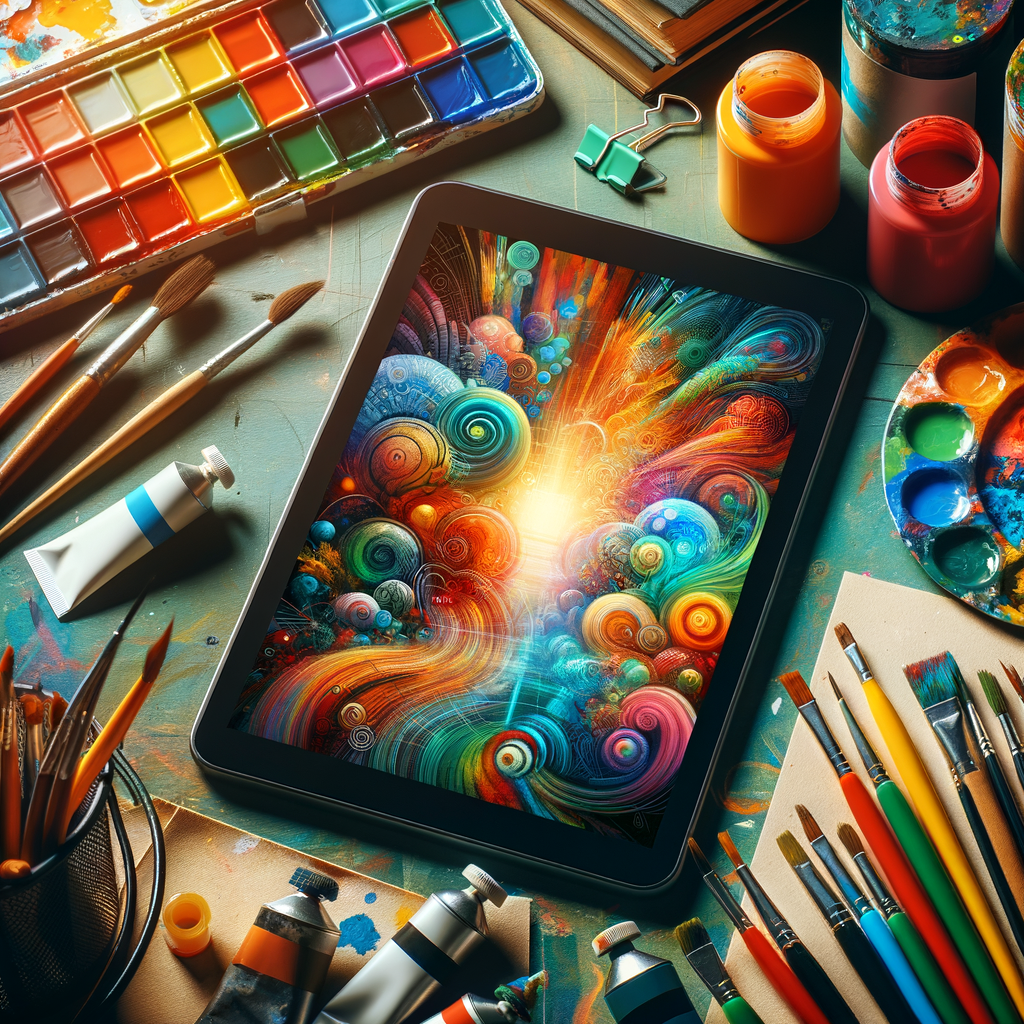
Color plays a crucial role in the creation of visual art. Understanding color theory can significantly enhance your digital artwork, allowing you to convey emotions, set moods, and create harmonious compositions. In this article, we will dive deep into the intricacies of color theory, discuss how to choose color palettes effectively, and provide tips to enhance your painting skills with color selection.
Color is more than just an aesthetic choice for artists; it is the language through which we communicate emotions and ideas. To master the art of color selection, one must first understand the fundamental concepts of color theory. This article will guide you through the essentials of color theory, help you to overcome common challenges artists face when dealing with color, and provide practical strategies for selecting and applying color palettes in your digital artwork.
Understanding Color Theory
Color theory is a set of guidelines that explains how colors interact with one another. It encompasses the color wheel, color harmony, and the emotional impact of colors. Understanding these principles can help you make informed decisions when choosing colors for your artworks.
The Color Wheel
The color wheel is a visual representation of colors arranged according to their chromatic relationship. The primary colors (red, blue, and yellow) can be mixed to create secondary colors (green, orange, and purple). Tertiary colors result from mixing primary and secondary colors. This wheel serves as a foundation for understanding color relationships and helps artists create a cohesive color palette.
Color Harmonies
Color harmonies refer to combinations of colors that create visual appeal based on their relationships in the color wheel. Some popular color harmonies include:
- Complementary Colors: Colors that are opposite each other on the color wheel. For example, blue and orange. Using these colors together can create a strong contrast that catches the viewer's eye.
- Analogous Colors: Colors that are next to each other on the wheel. For instance, blue, green, and yellow-green. This harmony offers a serene and comfortable aesthetic.
- Triadic Colors: Colors that are evenly spaced around the color wheel, like red, blue, and yellow. Triadic combinations tend to be vibrant and can create dynamic compositions.
The Psychology of Color
Different colors evoke different emotions and meanings. Understanding the psychological impact of colors can deepen the expression in your artwork. For instance:
- Red: A color of passion, energy, and excitement.
- Blue: Often associated with calmness, trust, and tranquility.
- Yellow: Evokes feelings of happiness and optimism.
- Green: Represents growth, nature, and renewal.
- Purple: Often symbolizes creativity, luxury, and mystery.
When selecting colors for your palette, consider the emotions you want to communicate.
Choosing the Right Color Palette
Now that you have a foundational understanding of color theory, let’s discuss how to select the right color palette for your digital art projects. Here are some practical tips:
- Define Your Theme: Start by determining the theme or mood you want to convey in your artwork. This decision will guide your color choices significantly.
- Use a Color Palette Generator: Tools like Adobe Color and Coolors.co can help you create custom palettes or explore existing ones that fit your desired theme.
- Limit Your Colors: A common mistake artists make is using too many colors. Stick to a limited color palette (3-5 colors) to maintain harmony.
- Start with a Base Color: Choose a dominant color that represents your theme, then build the rest of the palette around it, either by using complementary or analogous colors.
- Test Your Palette: Before applying your selected colors to the final artwork, test them on smaller sketches to see how they work together.
Practical Application of Color Theory
Here are some tips on how to apply your color knowledge in practice:
- Layering: Use different layers in digital painting to separate colors. This allows for easier adjustments and experimentation.
- Gradients: Experiment with gradients to add depth and dimension to your artwork. This technique can help smooth transitions between colors.
- Lighting Effects: Consider how lighting impacts colors. Shadows and highlights can change the perception of your palette, so ensure your colors reflect the light source appropriately.
- Feedback: Share your work with fellow artists or seek feedback online. Constructive criticism can help improve your color usage and overall composition.
Conclusion
Mastering color theory and knowing how to select a perfect color palette is an invaluable skill for any artist. By understanding the fundamentals of color relationships, the emotional impact of colors, and practical techniques for application, you can enhance your digital artwork significantly. Remember, practice is key in honing your color selection skills, so don’t hesitate to experiment and push your creative boundaries!

